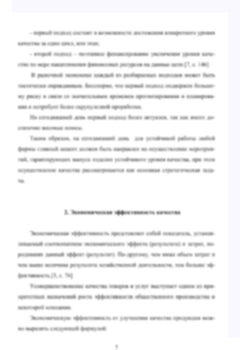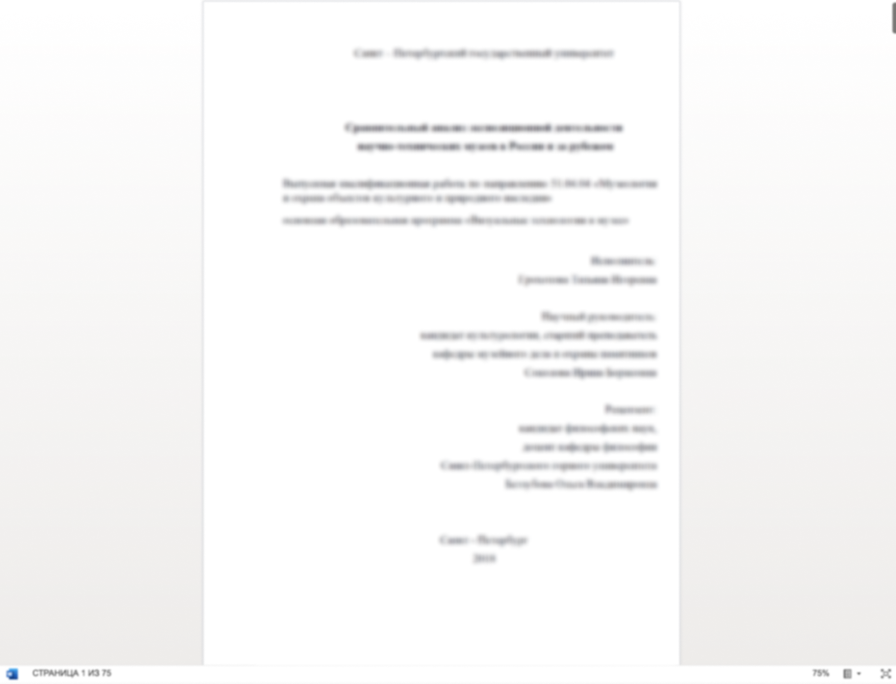
Различия в условиях ненависти к бренду в развивающихся и развитых странах
Целью данной работы является выявление различий в ненависти к бренду в развивающихся и развитых странах с учетом причин ненависти к брендам, выявленным в ранних исследованиях.
В ходе исследования, опрос из 30 вопросов был проведен среди студентов из бизнес-школ по всему миру. 206 ответов было собрано и использовано для последующего моделирования, использую регрессионный анализ.
В результате, данной исследование восполняет собой пробел в знаниях об истоках ненависти к брендам и добавляет понимание различий причин ненависти к брендам в развивающихся и развитых странах.
АННОТАЦИЯ ……………………………………………………………………………………………………..2
ABSTRACT …………………………………………………………………………………………………………3
ЗАЯВЛЕНИЕ О САМОСТОЯТЕЛЬНОМ ХАРАКТЕРЕ ВЫПОЛНЕНИЯ ВЫПУСКНОЙ КВАЛИФИКАЦИОННОЙ РАБОТЫ ………………………………………………………4
TABLE OF CONTENT………………………………………………………………………………………….5
CHAPTER 1. BRAND ATTITUDE AND BRAND HATE. ANTECEDENTS OF BRAND HATE. ………………………………………………………………………………………………………………9 Brand and brand studies. ……………………………………………………………………………………………….9
Consumer-brand relationships and brand hate phenomena……………………………………………….10
Literature review…………………………………………………………………………………………………………11
Antecedents of Brand Hate…………………………………………………………………………………………..18
Differences in brand hate antecedents in developing and developed countries. Conceptual model and hypotheses………………………………………………………………………………………………….19
METHODOLOGY AND DATA RELIABILITY DESCRIPTION…………………………….24 Survey as the tool for data collection …………………………………………………………………………….24
Regression as the method of data analysis. …………………………………………………………………….26 Variables of brand hate equations. ………………………………………………………………………………..28 Research methodology design. ……………………………………………………………………………………..29 Data reliability verification…………………………………………………………………………………………..30
CHAPTER 3. DATA ANALYSIS RESULTS. DIFFERENCES BETWEEN THE ANTECEDENTS OF BRAND HATE IN DEVELOPING AND DEVELOPED COUNTRIES.36 Regression analysis reliability validation……………………………………………………………………….36
Regression equation coefficients’ reliability validation. …………………………………………………..37 Comparing regression coefficients in brand hate regression equation. Additional test. ………..39 Differences between antecedents of brand hate in developing and developed countries……….41 Managerial implications and areas for future research……………………………………………………..43
CONCLUSION……………………………………………………………………………………………………45
LIST OF REFERENCES………………………………………………………………………………………51 Journal Articles:………………………………………………………………………………………………………….51
Webpages…………………………………………………………………………………………………………………..53
The Term of brand and branding are as old as civilization (K. Moor, S. Reid 2008). Since 1970-s, branding became a major topic in marketing discipline while the first brand related articles appeared in the early 20th century. For its more than 4 000 years history, characteristics of brands developed from informational as the origins and quality to imageable, such as power, value and personality. The last one, personality, was a phenomenon of the 20th century and lay the foundation of the brand-related studies. Besides the mentioned characteristics, it is very important to define what a brand is. There are different definitions, but in this thesis, the definition from the American Marketing Association’s dictionary will be used. Brand is defined as “name, term, design, symbol or any other feature that identifies one seller’s goods or services as distinct from those of other sellers”.
The value of a brand, creating it, maintaining it or, even better, growing it is of significant importance to any enterprise that currently has, or aspires to have, brands (Forbes CMO Practice, 2019). Brands are the strategic assets of the companies; they can be a major part in the company’s worth. Brands are intangible, they are not just logos or names that we associate with the company, they also include relations with the customers and customers’ attitude. Strong brands are an integral part of the company’s cost, for example Apple brands value was estimated at 260,2 billion dollars and plays a significant role in making Apple the most valuable company (Forbes, 2020).
In parallel with the development of “brands’ personality, scholars noted that consumer- brand relationships can be a metaphor to the person-to-person relationships (Shrimp&Madden, 1988). One of the possible directions of these relationships was love. In Shrimp&Madden’s study, they showed different types of brand love, that all were based on Sternberg’s “triangular theory of love” (Sternberg, 1986). This theory is more psychology-related than marketing-related, but most of the brand-hate and brand-love related papers were based on it. According to this theory, hate is the opposite feeling to love and there are several degrees of hate and love in person-to-brand relationships. Considering brand hate as the opposite feeling to love, scholars assume that brand hate is the opposite to brand love, so person-to-brand hate is quite similar to person-to person hate.
In the situation of intense competition between companies, the role of the brand attitude and person-to-brand relationships increases significantly (Gupta et al., 2020). From the point of the company, a strong and beloved by its customers brand can help in marketing activities, it justifies price premium and attracts customers. From the point of view of customers, a strong
beloved brand is an important point in the decision-making process during the purchase (Albert & 6
Merunka, 2013). More likely people, who are not experts in this or that product category, would prefer to buy a product with the beloved brand on it in order to be sure of its quality. Some brands became iconic, loyal customers purchase its products from year to year, ensuring companies with a stable cash flow. At the same time, other brands became “iconic” as well, but the results are opposite, people refuse to buy companies products and, sometimes, even damage companies’ assets. For example, low-cost airlines Ryanair, because of poor service, became “iconic” in terms of low quality and this fact makes some people avoid using this airline (Romani et al., 2016). In the first case, brand is competitive advantage, in the second case, brand is competitive disadvantage. This thesis will focus on the second aspect of these person-to-brand relationships.
But what makes people hate brands? No doubt, it depends on the person and almost each case is unique. However, there are some patterns that describe people’s attitude. During the past 20 years, scholars found 3 main groups of brand hate antecedents, specifically: dissatisfaction with the brand image, dissatisfaction with the brands’ product quality and dissatisfaction with the corporate performance (Romani et al., 2016). While the first group is related to the brands’ personality, the way the customers perceive the brand, second and third groups are related to the companies’ performance. Also, most of the research was conducted in the developed countries, specifically in Western European countries. However, the culture of consumption and the consumer’s behavior differs from country to country, especially in context of the development level (Saunter et al., 2015). These things can influence person-to-brand attitude as well. That is why the main goal of this thesis is to compare the antecedents of brand hate in the developing and developed countries. To do so, the quantitative research was conducted, residents of the developed countries (BeNeLux, Germany, France) and developing countries (Russia, CIS and India) participated in the survey to answer the following research questions:
1) How does the dissatisfaction with the brand image influence brand hate in developing vs. developed countries?
2) How does the dissatisfaction with the brand’s product influence brand hate in developing countries vs. developed countries?
3) How does dissatisfaction with sociocultural norms by brands influence brand hate in developing vs. developed countries?
4) How does dissatisfaction with environmental norms by brands influence brand hate in developing vs. developed countries?
The goal of the study is to identify brand hate differences that are characteristic for the developing and developed countries, taking into consideration the antecedents of the brand hate, defined in the previous studies.
7
To achieve the goal, the following research objectives were set
1) Define, what are the antecedents of the brand hate;
2) Find out, what is the “weight” of these antecedents in the brand hate
in the developed countries;
3) Find out, what is the “weight” of these antecedents in the brand hate in the developing countries;
4) Compare the results in order to define, what are the differences in the antecedents of the brand hate in these 2 categories.
The object of the research is brand hate.
The subject of the research are the antecedents of the brand hate.
Research methodology of the paper consists of literature analysis, primary data will be
collected and analyzed using regression analysis.
The theoretical foundation of the current thesis will be based on extant branding literature. Thesis structure: the goal and the objective determined the structure of the current thesis. The first chapter is devoted to the analysis of the analyses of brand hate, its consequences
and antecedents. The chapter discusses main terms related to the brand attitude, brand hate and its influence on the company, antecedents of the brand hate and the possible differences in them in developing and developed countries. The analysis is concluded by the table that shows the main antecedents of the brand hate. A conceptual model of the research and hypotheses are also presented at the end of this chapter.
The second chapter pursues an empirical study aiming to identify research methods. Survey and regression analysis are described as data collection and data analysis methods, research methodology design is presented. Also, primary data’s reliability has been analyzed through descriptive statistics.
The third chapter provides analysis of research findings and defines, what are the differences in the brand hate between developing and developed countries using regression analysis methods, described in the previous chapter. Managerial implication and recommendations that can be made based on the empirical results are provided, as well as limitations and areas for future research.

Хочешь уникальную работу?
Больше 3 000 экспертов уже готовы начать работу над твоим проектом!



